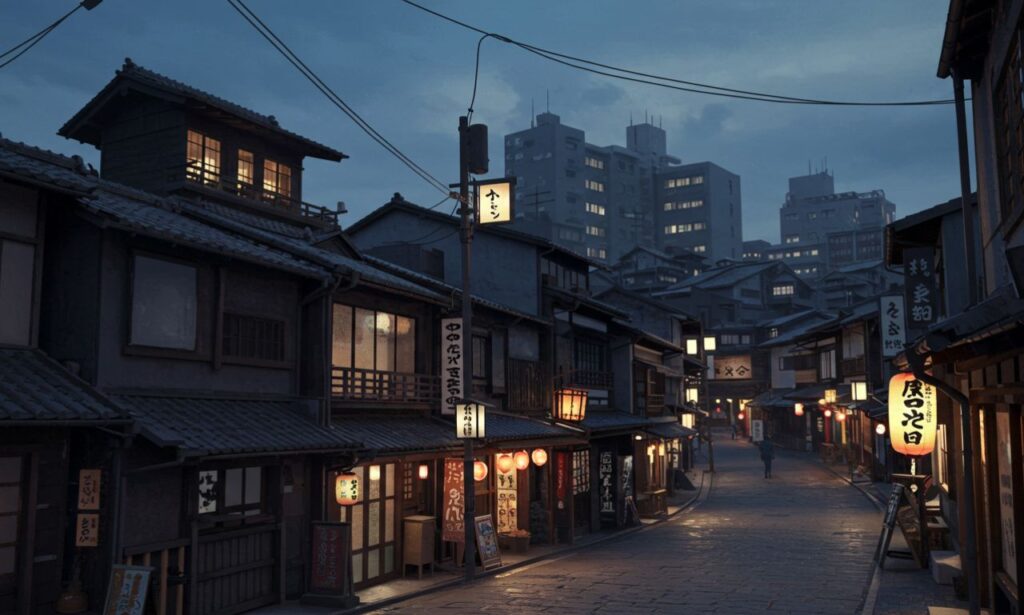Tsunaihaiya stands as a beautiful testament to the resilience of cultural heritage in Japan, specifically rooted in the Okinawan islands. While many around the world may not have heard of this graceful and historically rich dance, it holds a cherished place within the traditions of the local people. It’s far more than a simple performance — Tsunaihaiya reflects centuries of history, unity, and artistry.
Today, Tsunaihaiya remains a symbol of identity, hope, and communal harmony. Through this article, we will delve into its roots, the significance it holds, how it is performed, and how it continues to inspire younger generations in a rapidly modernizing world.
Tsunaihaiya: A Symbol of Okinawan Culture
Tsunaihaiya originates from Okinawa, a region steeped in ancient traditions and uniquely distinct from mainland Japan. Known for its vibrant dances and music, Okinawa has preserved its folk customs despite wars, modernization, and globalization.
This particular dance, often performed during seasonal festivals and local gatherings, exemplifies the importance of harmony within the community. It embodies Okinawan resilience, respect for ancestors, and gratitude for nature’s bounty.
Understanding the History Behind Tsunaihaiya
Tracing back to the Ryukyu Kingdom era, Tsunaihaiya was more than just entertainment. It was deeply intertwined with agricultural rituals, prayers for good harvests, and ceremonies to ward off natural disasters. Okinawans believed that dance and music could communicate with the spiritual world, bringing blessings from ancestral deities.
Throughout turbulent times, including the devastating effects of World War II on Okinawa, Tsunaihaiya survived, often practiced in secret when cultural expressions were suppressed.
The Cultural Significance of Tsunaihaiya
Tsunaihaiya carries a powerful message of unity and gratitude. It celebrates communal effort — a recurring theme in Okinawan life where neighbors rely on each other for farming, fishing, and preserving traditions. The dance encourages cooperation, joy, and a shared sense of responsibility.
For younger Okinawans, participating in Tsunaihaiy connects them to their roots, fostering pride and cultural continuity.
How Tsunaihaiya is Performed Today
The modern performances of Tsunaihaiya typically occur during festivals such as the Harvest Festival (Niiname-sai) and the Obon Festival. Dancers wear traditional Ryukyuan costumes, and their movements mirror the rhythms of taiko drums and sanshin music.
The choreography often reflects elements of daily life — sowing seeds, gathering crops, and celebrating nature’s gifts. These gestures, while simple, are filled with symbolic meaning.
Tsunaihaiya Costumes and Musical Elements
Costumes play a crucial role in maintaining the authenticity of Tsunaihaiya. Vibrant kimonos with intricate patterns represent Okinawan craftsmanship. Headgear adorned with flowers or fans adds to the visual storytelling of the performance.
Music features traditional Okinawan instruments, with the sanshin (a three-stringed lute) at its heart, alongside taiko drums and vocal chanting, creating an atmosphere that’s both festive and spiritual.
Traditional Festivals Where Tsunaihaiya Shines
Tsunaihaiya is often the highlight of community events, symbolizing the enduring connection between people and nature. Festivals like Eisa and Shuri Castle Festivals prominently feature this dance, attracting both locals and tourists eager to witness authentic Okinawan culture.
Tsunaihaiya and the Role of Women
Historically, women have been the primary custodians of Tsunaihaiya. They are seen as bearers of tradition, responsible for passing down the dance through generations. Their performances are graceful yet powerful, embodying both femininity and strength.
Why Tsunaihaiya Matters in Modern Times
In an era where digital entertainment often overshadows traditional arts, Tsunaihaiya stands as a living relic of cultural identity. It serves as a reminder of the value of heritage, encouraging younger generations to appreciate and preserve their unique cultural landscapes.
Furthermore, it has become a bridge between cultures as Okinawans share their traditions globally through performances and cultural exchanges.
Reviving Interest in Tsunaihaiya
Local governments and cultural organizations actively promote Tsunaihaiya through school programs, workshops, and international cultural festivals. These efforts ensure that the dance remains a vibrant part of Okinawa’s identity rather than a fading relic of the past.
Tsunaihaiya in Educational Curriculums
Okinawan schools have integrated Tsunaihaiy into their cultural studies programs. Students not only learn the dance but also explore its history, music, and significance. This holistic approach deepens their connection to their heritage.
Tsunaihaiya’s Influence on Other Art Forms
The aesthetics of Tsunaihaiy have inspired modern Okinawan artists, musicians, and even fashion designers. Elements of the dance can be seen in contemporary performances, blending traditional motifs with new expressions.
Preserving the Authenticity of Tsunaihaiy
Authenticity matters deeply to practitioners of Tsunaihaiy. Elder dancers emphasize the importance of maintaining traditional choreography, costume, and music to preserve the integrity of the performance.
Global Recognition of Tsunaihaiya
Tsunaihaiy has begun to attract attention on international stages. Cultural exchange programs and collaborations with global artists have allowed this Okinawan treasure to shine beyond Japan, fostering appreciation and respect for its unique artistry.
The Spiritual Aspect of Tsunaihaiya
Rooted in Okinawan spirituality, Tsunaihaiy is often associated with rituals seeking harmony between humans and the divine. It represents more than aesthetic beauty; it embodies a deep connection to the cycles of life and the natural world.
Tsunaihaiy as a Community Bonding Tool
Performing Tsunaihaiy brings people together, breaking generational gaps and fostering mutual respect. It’s common for entire communities, from children to elders, to participate in these dances, reinforcing social ties.
Challenges Facing Tsunaihaiya Today
Despite efforts to preserve it, Tsunaihaiy faces challenges such as declining rural populations, waning interest among youth, and the commercialization of traditional arts. Authentic preservation requires ongoing commitment from both individuals and institutions.
Technology and the Future of Tsunaihaiya
Modern technology, including virtual reality and digital archives, offers new avenues for preserving and sharing Tsunaihaiya. Online platforms enable people worldwide to learn about and appreciate this unique dance form.
Documenting Tsunaihaiya Through Media
Filmmakers and historians have documented Tsunaihaiy through documentaries, books, and academic studies, ensuring its stories and significance endure for future generations.
Tsunaihaiya’s Contribution to Okinawan Identity
Tsunaihaiy remains a proud symbol of Okinawan heritage. It highlights the island’s distinct history, resilience, and cultural richness in contrast to mainstream Japanese traditions.
Learning Tsunaihaiya: Resources and Workshops
For those interested in learning, numerous workshops, both in Okinawa and abroad, offer hands-on experiences. These programs often include lessons in dance, music, and the history behind the art.
Tsunaihaiy in Contemporary Celebrations
Today, Tsunaihaiy performances are featured not only in traditional festivals but also in contemporary events like weddings, anniversaries, and corporate gatherings, showcasing its adaptability and timeless appeal.
Tsunaihaiya and Tourism in Okinawa
Tourism boards promote Tsunaihaiy as part of cultural tourism packages. Visitors can experience the dance live or even participate, creating memorable connections to Okinawa’s heritage.
Tsunaihaiy’s Place in Global Cultural Diversity
As the world becomes more interconnected, Tsunaihaiya contributes to the global appreciation of cultural diversity. It stands as a reminder of the beauty found in preserving and sharing local traditions.
The Future Outlook for Tsunaihaiya
Looking ahead, the future of Tsunaihaiy seems bright. With dedicated efforts from local communities, educators, and cultural organizations, this dance will continue to inspire, educate, and unify.
Tsunaihaiya
Tsunaihaiy enduring charm lies in its ability to connect the past with the present. Rooted deeply in Okinawan soil yet adaptable to modern sensibilities, it is a living, breathing tradition. Whether seen on a festival stage or learned through a local class, Tsunaihaiy reminds us all of the strength found in tradition and the joy of cultural expression.
Conclusion
Tsunaihaiy is not merely a dance; it is a living symbol of Okinawa’s enduring spirit and cultural richness. As it gracefully bridges the past with the future, this tradition continues to inspire those who witness or participate in its joyful rhythms. By honoring Tsunaihaiy, we celebrate the resilience of cultural heritage in an ever-changing world.







